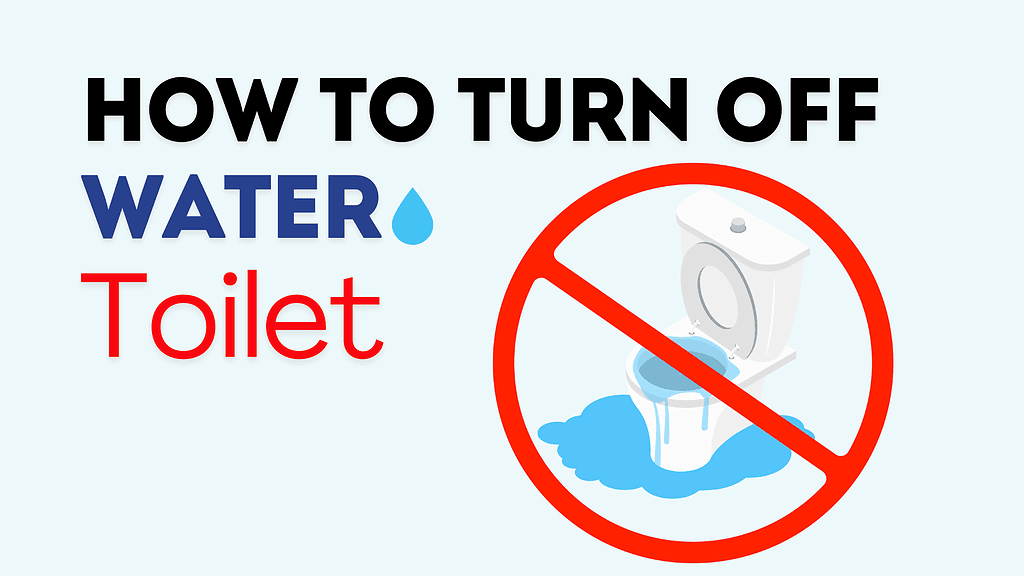
When dealing with a toilet leak, overflow, or repair, knowing how to turn off the water to your toilet is essential. Stopping the water flow can prevent potential damage and save you from costly repairs. In this guide, we’ll walk you through the process of turning off the water to your toilet and provide links to other helpful resources for shutting off water to various fixtures in your home.
Why You Might Need to Turn Off the Water to Your Toilet
Turning off the water to your toilet is helpful in a variety of situations, such as:
- Fixing a toilet leak
- Replacing a toilet fill valve or flapper
- Installing a new toilet
- Preventing an overflowing toilet
Tools You Might Need:
- Adjustable Wrench (for stubborn shut-off valves)
- Towel or Bucket (to catch any excess water)
How to Turn Off Water to Your Toilet
Toilet water shut-off is a simple process. There is typically one shut-off valve located behind or beside the toilet, connected to the water supply line. Follow these steps:
1. Locate the Toilet Shut-Off Valve
The shut-off valve is usually located on the wall or floor behind the toilet, connected to the water supply line. It’s a small valve that controls the flow of water to the toilet tank.
2. Turn the Valve Off
- To stop the water flow, rotate the shut-off valve clockwise until it’s fully closed.
Pro Tip: If the valve is stuck or difficult to turn, use an adjustable wrench for better grip, but be gentle to avoid damaging the valve.
3. Check for Water Flow
Once the valve is turned off, flush the toilet to empty the tank and bowl. If no water refills the tank, you’ve successfully shut off the water supply.
What to Do If the Toilet Shut-Off Valve Won’t Turn
In older homes or with older plumbing, the shut-off valve may be hard to turn due to corrosion or lack of use. Here are a few solutions:
1. Turn Off the Main Water Supply
If you can’t turn off the toilet valve, your next option is to turn off the water supply to the entire house. For help with this, check out our Master Guide: How to Turn Off Water to Your Whole House.
2. Replace the Shut-Off Valve
If the shut-off valve is broken or won’t turn, it may need to be replaced. In this case, it’s best to contact a plumber to install a new valve.
When to Turn Off the Water to Your Toilet
Here are some common scenarios when you need to turn off the water to your toilet:
- Overflowing Toilet: If your toilet is overflowing, turning off the water supply immediately can prevent water damage.
- Fixing a Leaky Toilet: If your toilet has a continuous leak or is running, turning off the water supply allows you to make repairs without wasting water.
- Toilet Replacement or Installation: When installing a new toilet or replacing parts like the fill valve or flapper, turning off the water is a crucial first step.
Related Guides for Turning Off Water to Other Fixtures
Explore our other step-by-step guides for shutting off water to different fixtures in your home:
- How to Turn Off Water to a Kitchen Sink: Learn how to quickly shut off water to your kitchen sink for repairs or leaks.
- How to Turn Off Water to a Washing Machine: Find out how to stop water flow to your washing machine in case of leaks or hose replacements.
- How to Turn Off Water to Your Whole House: In the event of an emergency or major plumbing repair, knowing how to turn off the water supply to your whole house is essential.
- How to Turn Off Water to a Water Heater: Learn how to shut off water to your water heater during maintenance or if it’s leaking.
- How to Turn Off Water to a Refrigerator: Find out how to shut off water to your refrigerator, especially if it has a water dispenser or ice maker.
- How to Turn Off Water to Your Bathroom Sink: Learn the steps to quickly stop the water flow to your bathroom sink during leaks or repairs.
Final Thoughts: How to Safely Turn Off Water to Your Toilet
Shutting off the water to your toilet is a quick and easy process that can save you from significant water damage and costly repairs. Whether you’re dealing with a small leak or a major toilet installation, knowing how to control the water supply is an essential homeowner skill.
If you encounter any issues or need professional assistance, contact GPS Plumbing. Our licensed plumbers are ready to help with toilet repairs, replacements, or any other plumbing concerns, ensuring your home stays leak-free and functional.

